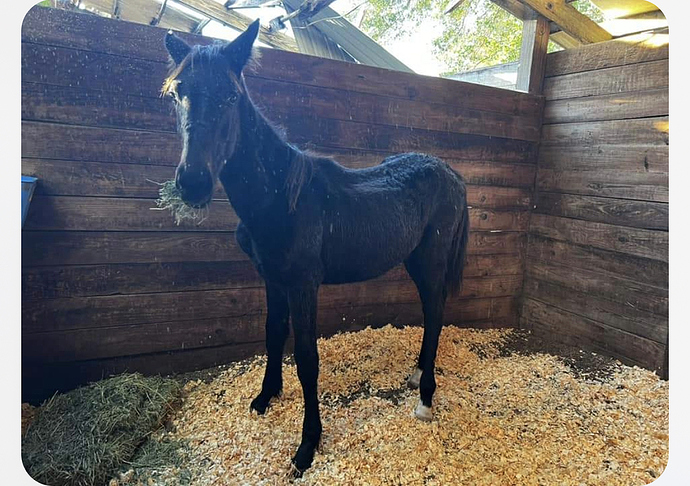Good.ness. This thread is a doozy. I’m a little late to the party but wanted to chime in with some experience here.
I’ve done two ICSI sessions on a mare of mine and here’s how it has (roughly) broken out. Doing all my own work leading up to and managing the mare, oocyte aspiration has been $1k. Both times around 14 oocytes aspirated, 9 matured enough to fertilize, 3 resultant embryos. One year, a fresh was put in a mare and 2 frozen, this year all 3 were frozen. Each time, the cost was right around $4k for each of those ICSI procedures. Then there’s cost to thaw and transfer. So right around $5-6k, doing most of the other work myself save for aspiration, fertilization, freeze/thaw, and implant. If you need someone else to manage the mares, especially if boarding, it can easily exceed $10-15k. I know someone personally who paid right around that to have her donor and recips managed.
The rest below is just general information, not necessarily responding to you, SusanO…
Said friend’s donor mare came from EMS in terrible shape; feet, condition, mentally in a bad place. Everyone’s mileage may vary, but I’ll stick with the clinics I know in Texas……
You can find a la carte pricing on the clinics websites. For those who would like a small rabbit hole, EquiEmbryo and ViaGen post their prices, I think In Foal Inc does as well.
Traditional ET is actually a pretty easy concept in terms of procedure if you have some repro back ground, but technique and skill still dictates success rates. I’ve attempted one myself; no embryo found to transfer. The cycle I bred the mare in wasn’t great and I didn’t have high hopes. So unsuccessful because of lack of experience? Or because the cycle wasn’t great? Who knows. But until I can get some experience under my belt with less-high dollar ETs on an older mare who may have limited time left with us, I’ll keep paying for someone who has a better record than 0-1. But it IS possible for a layman to do traditional ET if they have some extensive experience behind them. ICSI? Not so much.
Full disclosure, I breed QHs so no idea how warmblood registries work. But the way frozen semen is regulated in QH, you need the stallion owner to submit a breeding report and release the breeders certificate for each breeding. So if you have additional frozen that you use and don’t report to the stallion owner (and subsequently pay for the additional breeding), that breeding doesn’t go on the breeding report and therefore foal is unregisterable. Same goes with ICSI embryos, dependent on contract. I have two frozen stored by a stallion who died several years ago. The contract agreement is that additional stud fees are not due until subsequent ICSI embryos are born alive and stand. At which point, if I don’t pay the additional stud fee, the stallion owner will not put the mare on the breeding report, and therefore will not have a breeders certificate to release, and foal would not get registered. Do warmblood registries have similar requirements for breeding reports?
I’m baffled that the entire horse industry does not know about this person. I was first introduced via the braiding industry. What she’s done to clients (that the rest of us have to try to fix and pick up the slack on), it’s amazing that people still hire her.
I was scantly aware that there were some pictures floating around of horses in poor condition, but this thread has really dug up how disgusting of a being (not even human) she is.
Mine are truly on free choice alfalfa and still require at least a ration balancer. No BCSs of 2, no protruding toplines, no grossly under muscled creatures showing clear signs of joint disorders and malnutrition. Oh, and the babies are appropriately lean with clean legs and round/filled in toplines. No need to starve to avoid issues; of which is laughable, since the research clearly indicates that underfeeding and malnutrition is a major reason for joint disorders in the growing horse.





